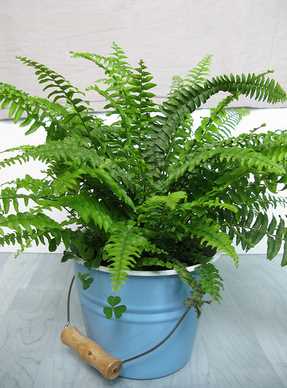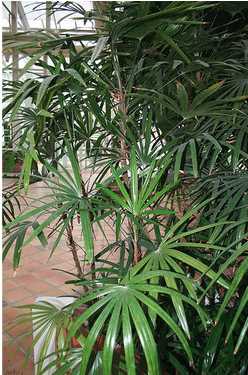10 NASA-Approved Air-Purifying Plants for a Healthier Home
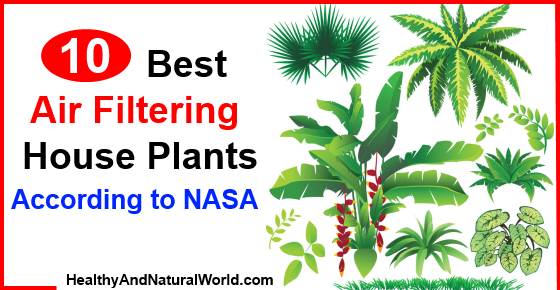
Ever feel like the air in your home is stale, stuffy, or triggering allergies? You’re not imagining it. According to the U.S. Environmental Protection Agency (EPA), indoor air can be up to five times more polluted than outdoor air due to trapped toxins from furniture, carpets, household cleaners, and even paint (source).
While you might not see these pollutants, they can include formaldehyde, benzene, and ammonia—chemicals linked to respiratory issues, skin irritation, and overall poor indoor air quality. But before you rush out to buy expensive air purifiers, there’s a natural, budget-friendly solution that science backs: houseplants.
NASA’s famous Clean Air Study found that certain indoor plants don’t just produce oxygen—they also remove harmful airborne toxins and improve air quality. These low-maintenance plants act as living air purifiers, creating a fresher, cleaner home with minimal effort.
If you’re looking to improve your indoor air while adding greenery to your space, here are NASA’s top air-purifying plants and how they work.
1. English Ivy (Hedera helix) – The Versatile Air Filter
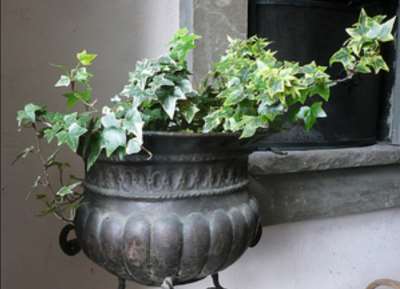
English ivy is one of the best plants for filtering toxins, especially in small or enclosed spaces. Research shows it’s particularly effective at removing airborne mold and fecal matter particles, making it a great option for bathrooms, bedrooms, and homes with pets.
It’s also ideal for hanging baskets since its vines spread easily, creating a lush, cascading effect. English ivy thrives in moderate light and cool temperatures, so it’s a perfect low-maintenance choice for improving air quality while enhancing your home’s décor.
- Best for: Small spaces, reducing mold & allergens
- Light: Indirect light, moderate to low
- Water: Keep soil slightly moist
2. Golden Pothos (Epipremnum aureum) – The Hard-to-Kill Air Purifier
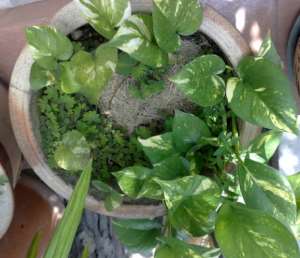 Looking for a low-maintenance plant that works hard to clean your air? Golden pothos, also known as devil’s ivy, is a powerful toxin remover that NASA identified as highly effective at eliminating formaldehyde—a common pollutant found in furniture, carpets, and cleaning products.
Looking for a low-maintenance plant that works hard to clean your air? Golden pothos, also known as devil’s ivy, is a powerful toxin remover that NASA identified as highly effective at eliminating formaldehyde—a common pollutant found in furniture, carpets, and cleaning products.
The best part? This fast-growing vine thrives on neglect. If you tend to forget to water plants, golden pothos won’t mind. It can survive in low light, grow in a hanging basket, or trail along shelves, making it one of the best plants for adding greenery to any space.
Related: Best Indoor Hanging Plants to Brighten Your Space
- Best for: Beginners, low-maintenance homes, reducing formaldehyde
- Light: Low to bright, indirect
- Water: Allow soil to dry between waterings
Boston Fern (Nephrolepis exaltata) – The Natural Humidifier
Dry air causing scratchy throats or irritated skin? Boston ferns don’t just filter toxins—they increase humidity, making them one of the best plants for bedrooms and living spaces.
NASA’s study found Boston ferns excel at removing formaldehyde, a chemical released from paints, adhesives, and furniture. Their lush, feathery fronds also add aesthetic appeal, creating a tropical, fresh feel indoors.
Pro Tip: If you love keeping plants in your bathroom, Boston ferns thrive in humid spaces—check out the best Shower Plants That Love Moist Environments.
- Best for: Dry climates, increasing moisture, filtering toxins
- Light: Indirect, moderate to bright
- Water: Keep soil consistently moist
4. Dracaena (Dracaena deremensis) – The Pollutant Buster
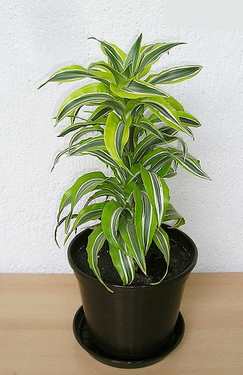
If airborne toxins concern you, dracaena is a must-have. NASA’s Clean Air Study found this plant effectively removes benzene, trichloroethylene, and formaldehyde—common chemicals lurking in varnishes, paints, and household products.
With its striped, sword-like leaves, dracaena adds a modern touch to any space while improving indoor air quality. It’s also easy to maintain, thriving in low to moderate light and requiring only occasional watering.
More on Air-Cleaning Plants: The Best Plants to Keep in Your Bedroom for a Healthier Sleep
- Best for: Offices, homes with varnished furniture or painted walls
- Light: Low to moderate, indirect
- Water: Let topsoil dry out before watering
5. Bamboo Palm (Chamaedorea seifrizii) – The Compact Humidifier
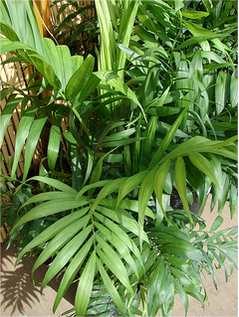 Small space? No problem. Bamboo palms fit easily into corners, making them a perfect indoor plant for apartments.
Small space? No problem. Bamboo palms fit easily into corners, making them a perfect indoor plant for apartments.
Not only did NASA identify it as one of the best air-filtering plants, but it also acts as a natural humidifier, releasing moisture into the air—great for dry climates or winter months.
- Best for: Apartments, adding moisture to dry air
- Light: Low to bright, indirect
- Water: Keep soil slightly damp
6. Dragon Tree (Dracaena marginata) – The Office Favorite with a Hidden Talent
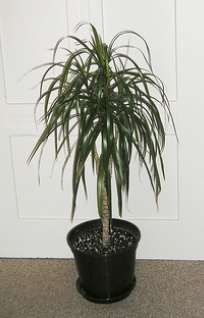
The Dragon Tree isn’t just a favorite for modern office spaces—it’s a powerful air purifier that removes xylene, a common pollutant found in car exhaust, paint, and household cleaners.
With its slim, upright growth and striking red-edged leaves, this plant adds elegance to any room while improving air quality. It’s also one of the easiest houseplants to care for, thriving on minimal watering and indirect light.
Related: Best Tall Indoor Plants – Low Maintenance & Stylish
- Best for: Reducing xylene & air pollution
- Light: Bright, indirect
- Water: Let soil dry between waterings
7. Peace Lily (Spathiphyllum) – Beauty Meets Air Purification
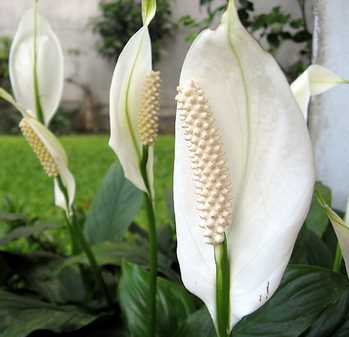
The Peace Lily is as practical as it is beautiful. Its lush green leaves and white blooms add elegance, but it’s also a NASA-approved air purifier, removing benzene, formaldehyde, and trichloroethylene from the air.
One of its standout features? It has one of the highest transpiration rates, meaning it adds moisture to the air—perfect for dry indoor environments.
Care Tips:
- Water once a week—this plant wilts when thirsty but bounces back quickly
- Thrives in low-light spaces, making it ideal for bedrooms
- Be cautious—Peace Lilies are toxic to pets, so keep them out of reach
Pro Tip: Want a lush, calming bedroom? Peace Lilies are one of the best shower plants—they thrive in humidity.
8. Lady Palm (Rhapis excelsa) – The Luxurious Pollution Fighter
The Lady Palm is a top-tier choice for air purification—removing multiple indoor pollutants while also boosting humidity.
This stunning, slow-growing palm adds a luxurious touch to living rooms, bedrooms, or offices, and it’s also resistant to insect infestations, making it one of the easiest palms to care for.
Care Tips:
- Requires frequent watering in summer but less in winter
- Thrives in low to bright indirect light
- Avoid overwatering—allow the topsoil to dry between watering
Fun Fact: Lady Palms are widely used in luxury hotels due to their sophisticated appearance and air-purifying properties.
More Elegant Choices: Stunning Indoor Palm Trees for Your Home
9. Spider Plant (Chlorophytum comosum) – The Easiest Air-Cleaning Plant
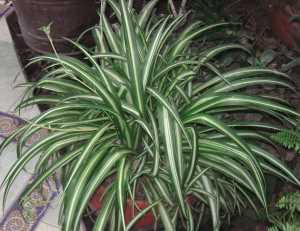
If you struggle to keep plants alive, meet your new best friend—the Spider Plant.
This low-maintenance powerhouse is one of NASA’s top air-purifying plants, absorbing carbon monoxide, formaldehyde, and benzene.
With its cheery green-and-white striped leaves, it looks fantastic in hanging baskets or perched on a shelf. It’s also one of the best plants for homes with fireplaces or gas stoves, since it reduces indoor pollutants from burning fuels.
- Best for: Removing carbon monoxide & formaldehyde
- Light: Low to bright, indirect
- Water: Water every 1-2 weeks
10. Snake Plant (Sansevieria trifasciata) – The Best Bedroom Plant for Clean Air
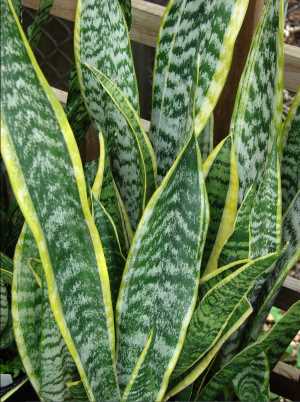
Snake plant is in the list of drought tolerant plants
Related: The Best Plants to Have in Your Bedroom
NASA confirmed what plant lovers already knew—the Snake Plant is a champion air purifier.
Unlike most plants, it absorbs CO₂ and releases oxygen at night, making it one of the best plants for your bedroom. It’s also known as Mother-in-Law’s Tongue, thanks to its long, sword-like leaves.
This low-maintenance plant doesn’t just remove toxins like formaldehyde and benzene—it thrives on neglect.
Care Tips:
- Water once every 2-3 weeks—it hates overwatering
- Tolerates low light but grows faster in bright, indirect light
- Perfect for bedrooms—helps improve nighttime air quality
More Plants for a Restful Night’s Sleep: Best Bedroom Plants for Relaxation & Fresh Air
Related articles:

